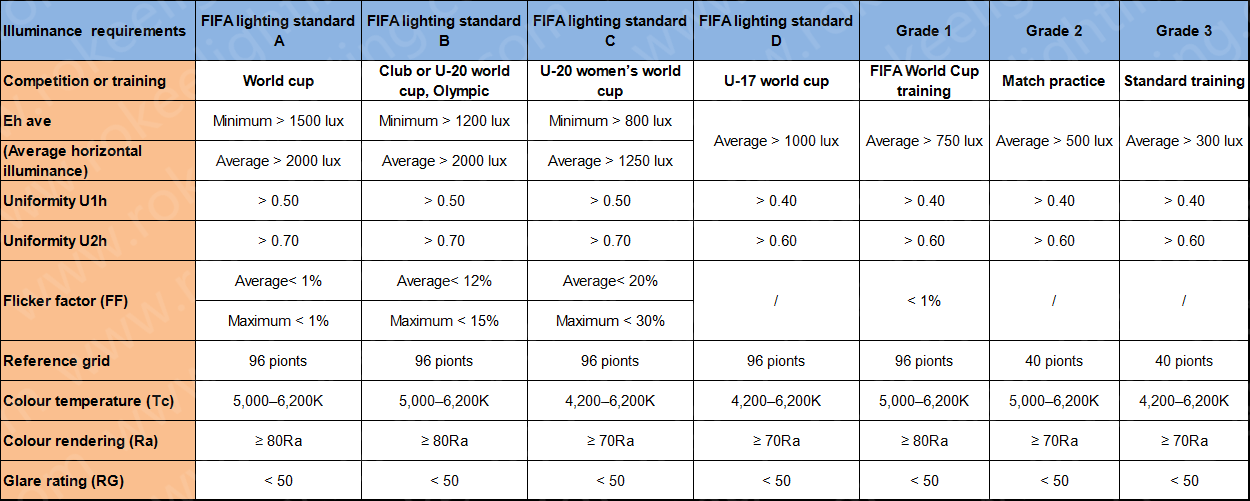How to Choose High Quality Sports Lighting?
Proper sports field lighting is critical to any professional stadium, university, or athletic facility. It ensures player safety and visibility and enhances the overall spectator experience. But what factors should be considered when choosing sports lighting? Why is it important to adhere to industry standards?
In this article, Rokee will delve into key aspects of sports lighting, the benefits of high-quality lighting, and the risks associated with poor lighting. Here's everything you need to know:
Standards for Sports Field Lighting
Sports field lighting must meet the needs of the audiovisual media, spectators, professional soccer players and spectators. Their lighting requirements depend on whether the venue is used for matches or training, whether matches are national or international, whether they are televised, and so on.
Depending on these, there are many different levels and different parameters. Let's take a look at the main types of soccer field lighting and the characteristics they need to have.

Advantages of advanced lighting systems
Implementing the right measures can mitigate the risks associated with poor lighting. Key benefits of superior sports lighting systems include:
Enhanced athlete experience: optimal visibility on the field is critical for sports that require quick reaction times. Adequate lighting helps avoid eye strain and minimizes the risk of injury due to poor visibility. Choosing low-quality lighting or installing it incorrectly can result in uneven light distribution, black spots or excessive glare, impairing athletes' vision and making the field unsafe.
The main risks of substandard lighting include:
Reduced visibility: inadequate lighting makes it difficult for athletes to see the field or court, increasing the risk of accidents and injuries.
Spectator safety: inadequate lighting can compromise spectator safety and lead to accidents such as falls. It also prevents first responders from responding quickly, delaying medical attention and increasing the risk of serious injury.
Lighting level requirements
The planning and measurement of sports field lighting involves several key factors such as LUX levels, current consumption, efficiency, CRI, color temperature and Beam angle, which are included in the IES file used by designers to plan lighting layouts. The level of lighting required varies from sport to sport, and in addition, the color rendering index (CRI) is critical to faithfully displaying color, especially for fast-moving or detailed activities.
Getting Professional Help
Proper sports lighting is critical to the safety and enjoyment of athletes and spectators, and ROKEE is committed to providing state-of-the-art lighting systems to achieve optimal visibility and enhance the overall experience while minimizing risk.
rokee@rokeelighting.net